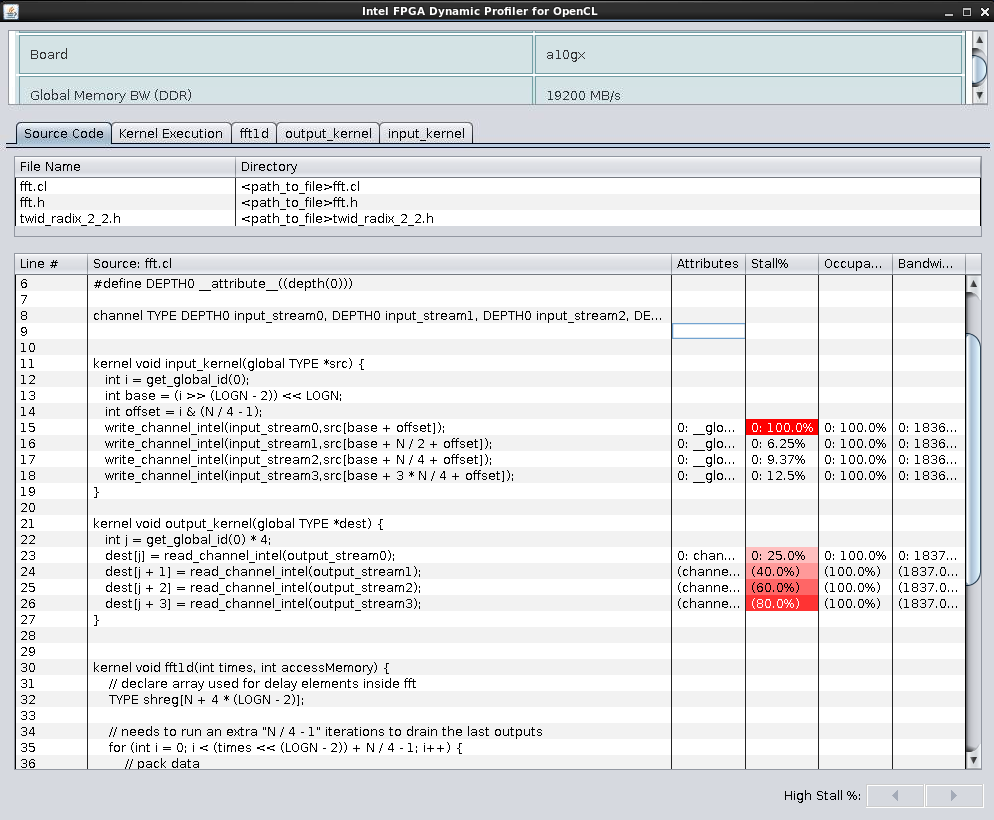Visible to Intel only — GUID: jgm1517866580258
Ixiasoft
Visible to Intel only — GUID: jgm1517866580258
Ixiasoft
4.3.4.1. High Stall Percentage
Memory instructions stall often whenever bandwidth usage is inefficient or if a large amount of data transfer is necessary during the execution of your application. Inefficient memory accesses lead to suboptimal bandwidth utilization. In such cases, analyze your kernel memory accesses for possible improvements.
Channel instructions stall whenever there is a strong imbalance between read and write accesses to the channel. Imbalances might be caused by channel reads or writes operating at different rates.
For example, if you find that the stall percentage of a write channel call is high, check to see if the occupancy and activity of the read channel call are low. If they are, the performing speed of the kernel controlling the read channel call is too slow for the kernel controlling the write channel call, leading to a performance bottleneck.
If a memory or channel access is causing high percentage pipeline stalls, the line in the source code that instructs the memory or channel is highlighted in red. A stall percentage of 20% or higher results in a high stall identification. The higher the stall percentage, the darker the red highlight will be. To easily traverse through high stall percentage values, right and left arrows can be found at the bottom right corner of the Source Code tab.
